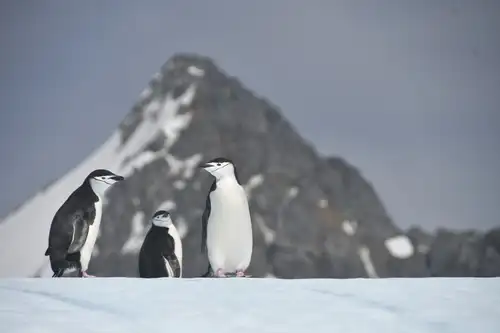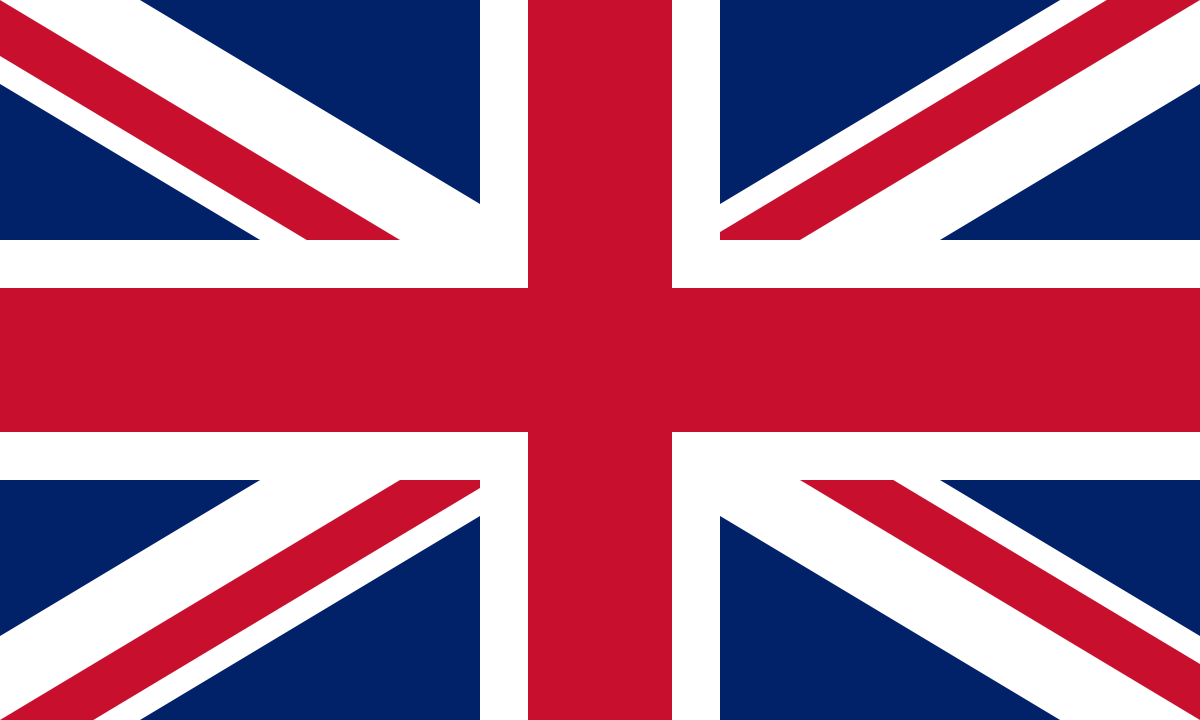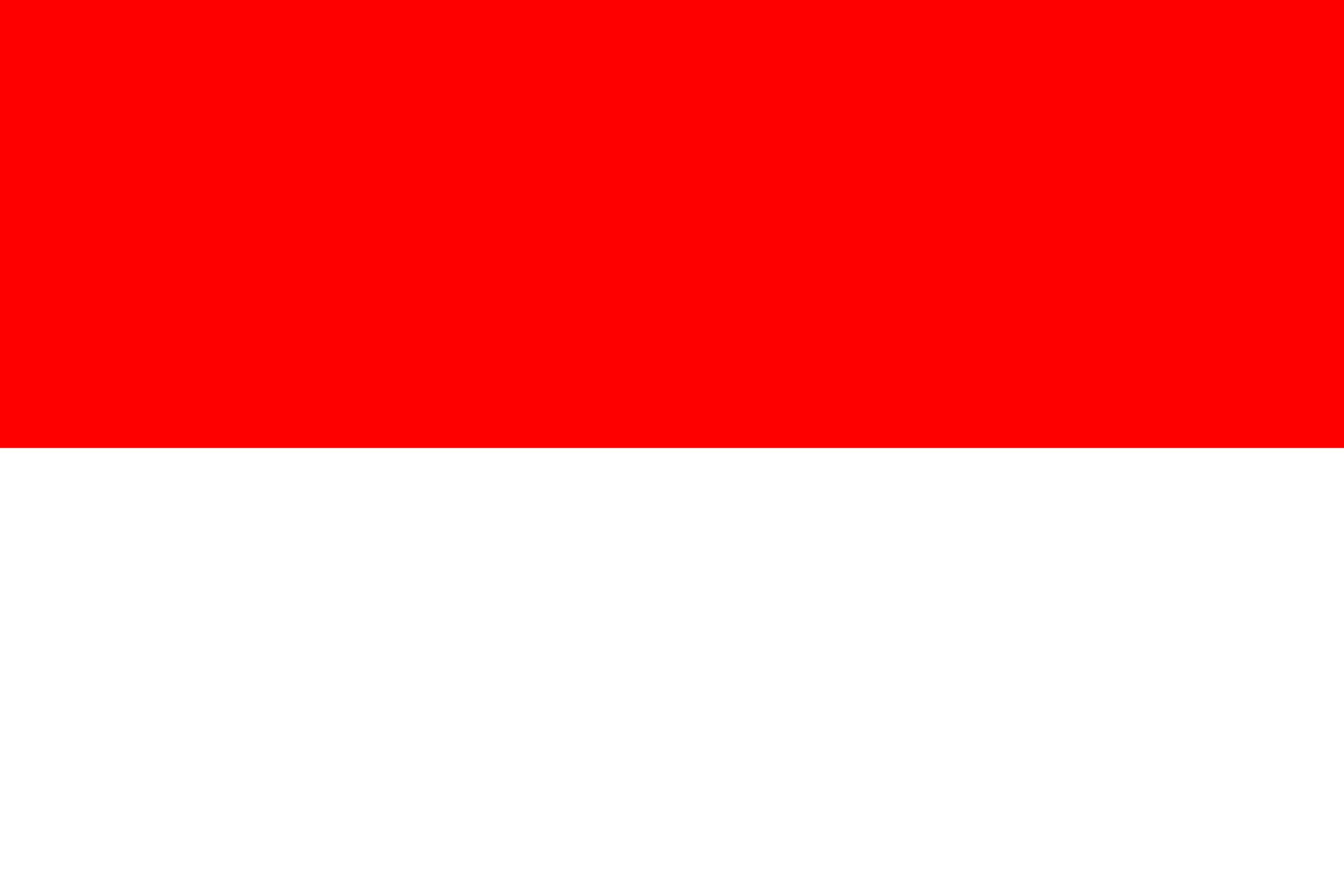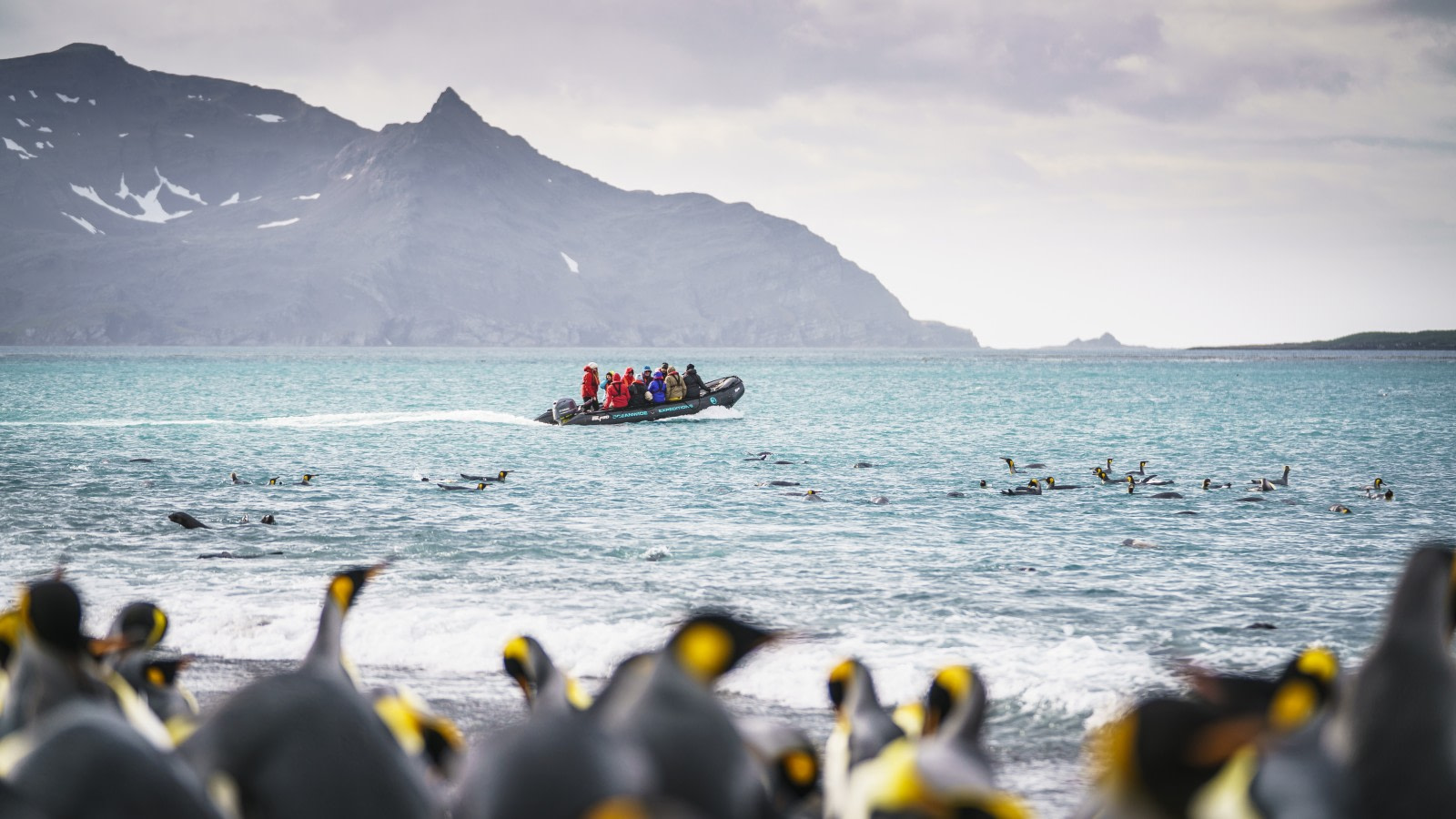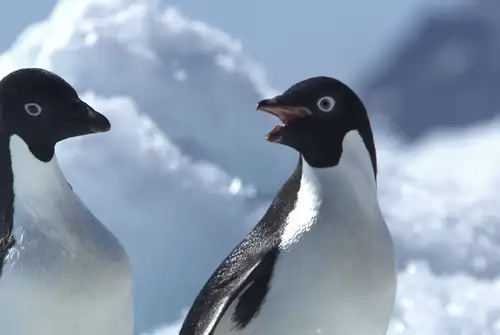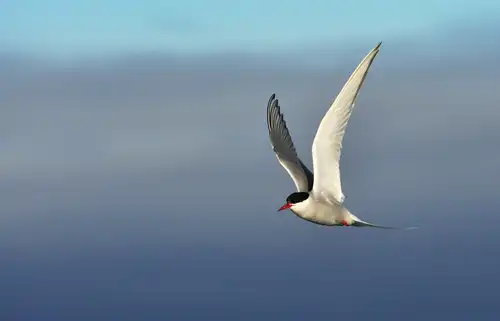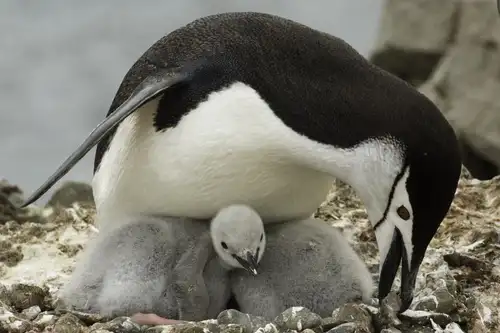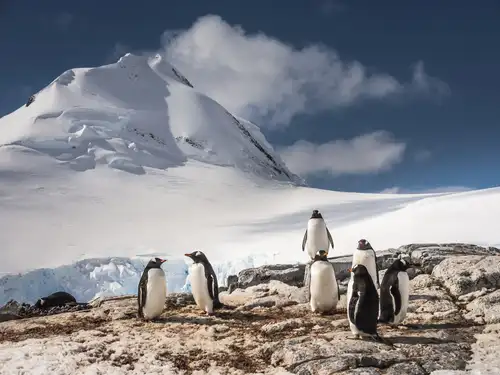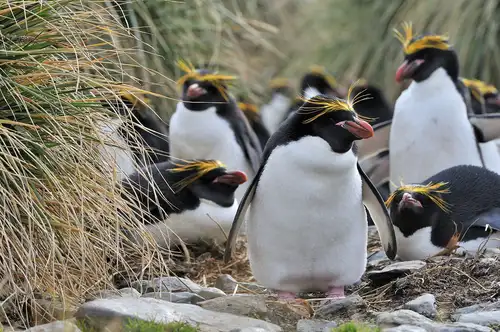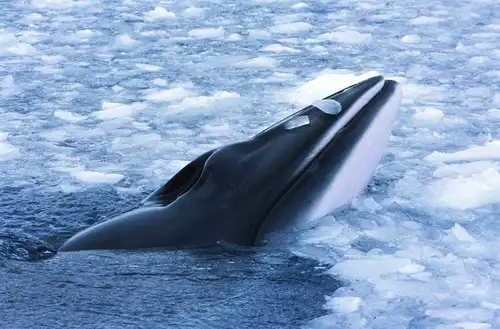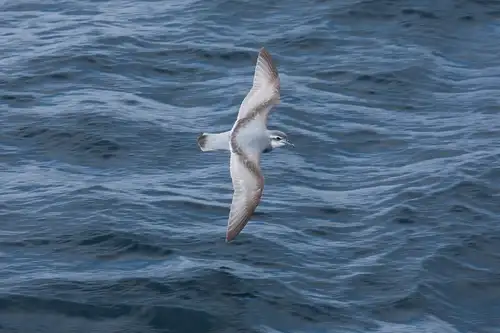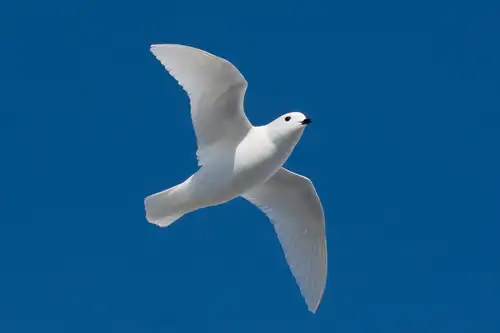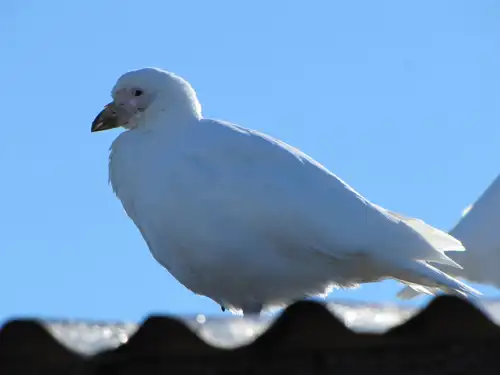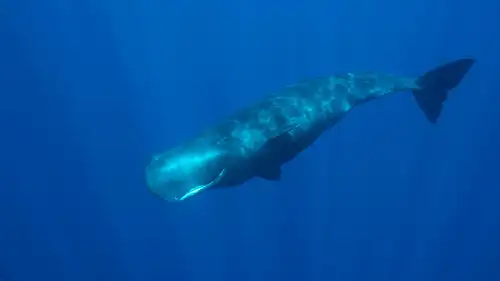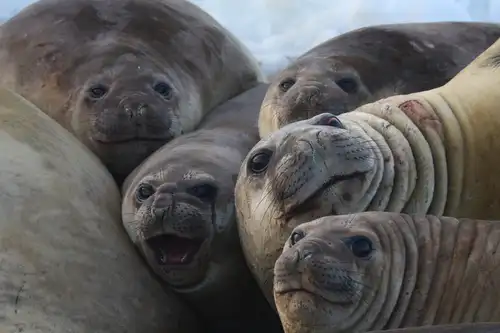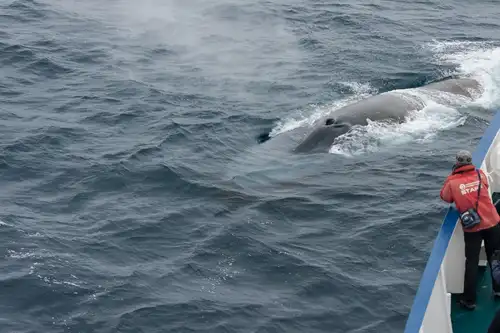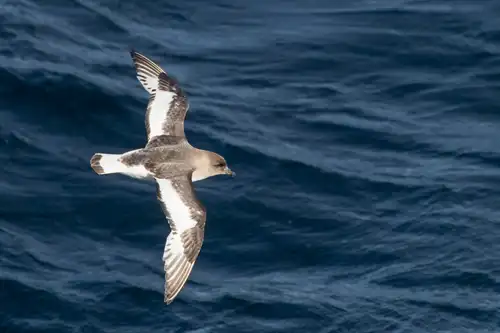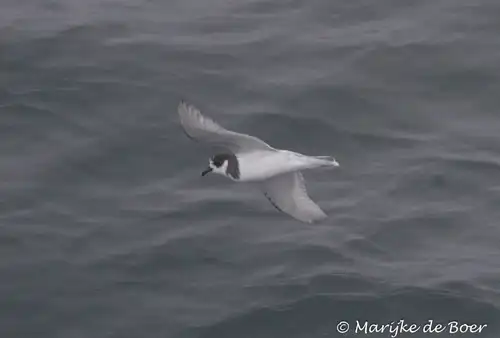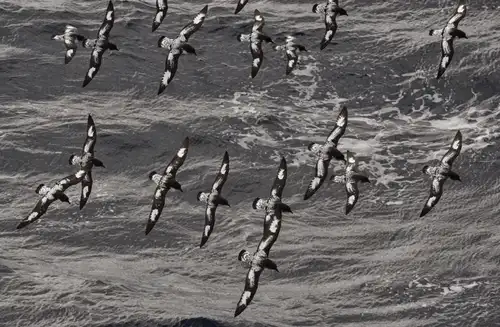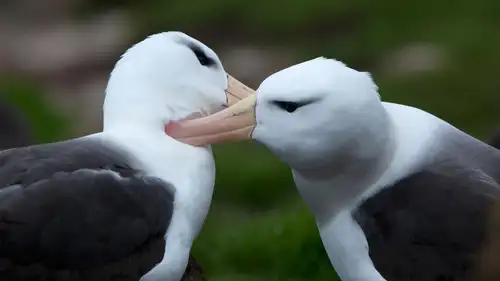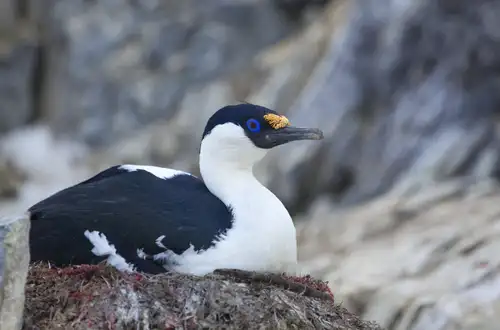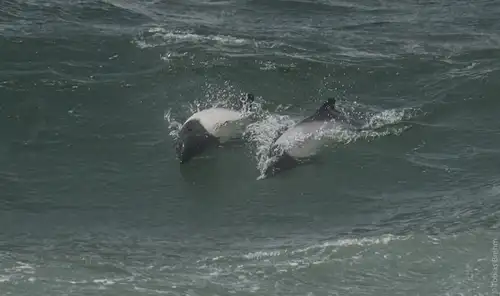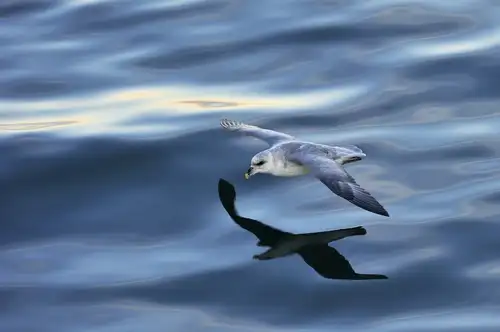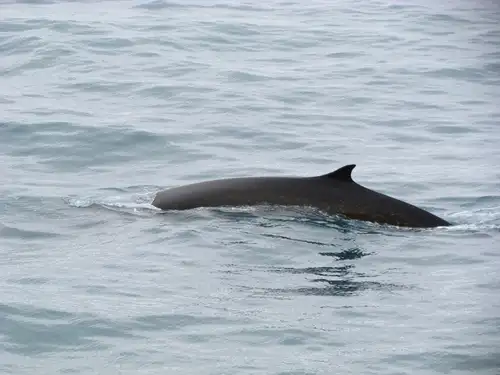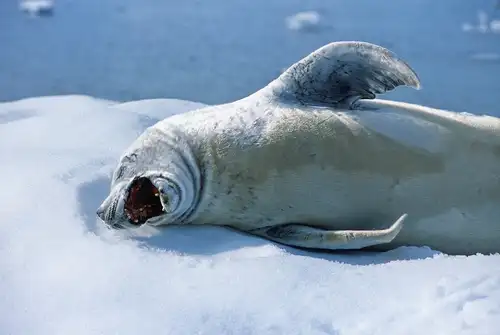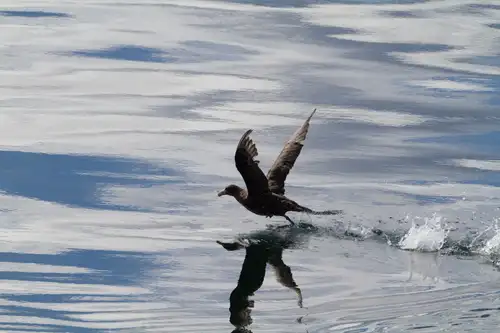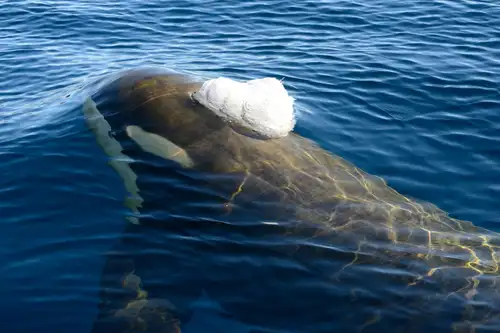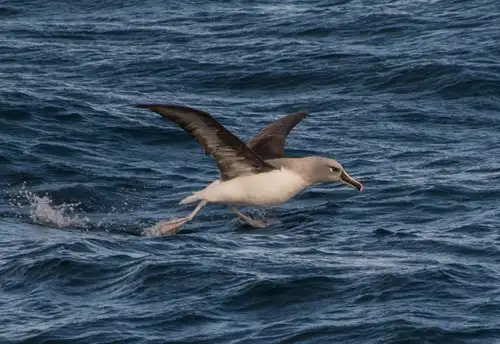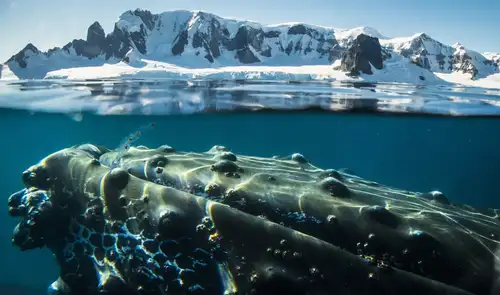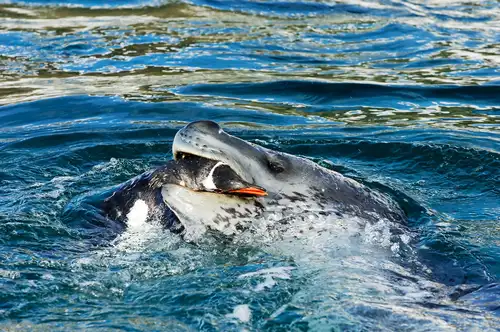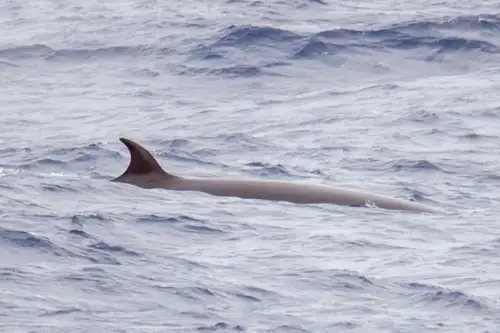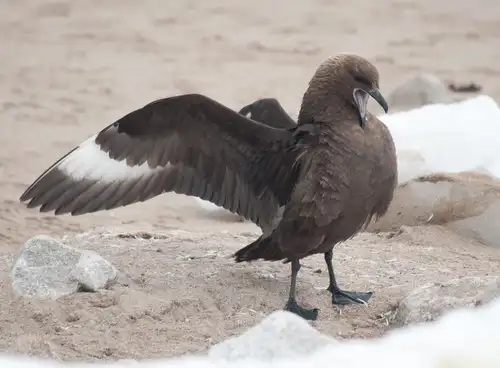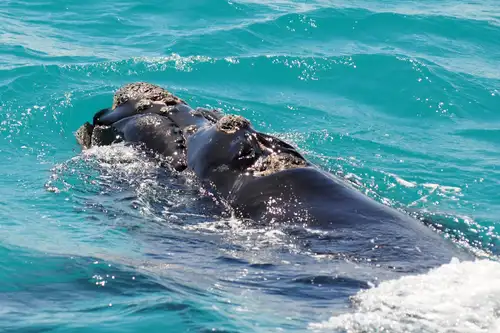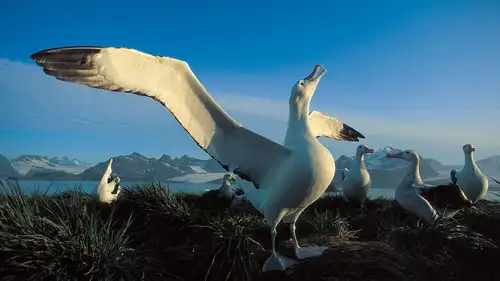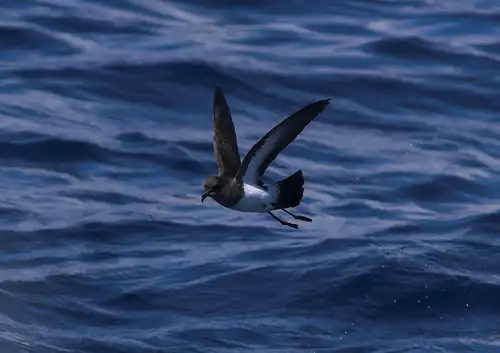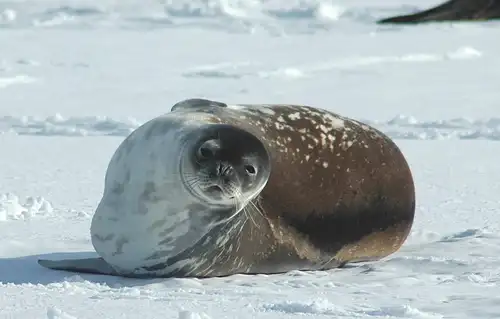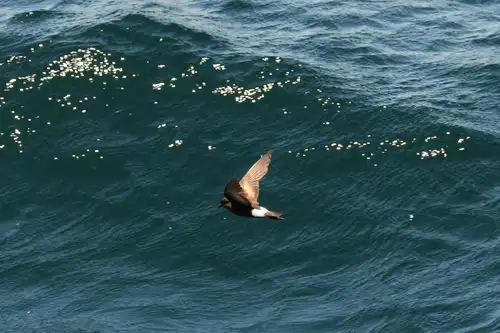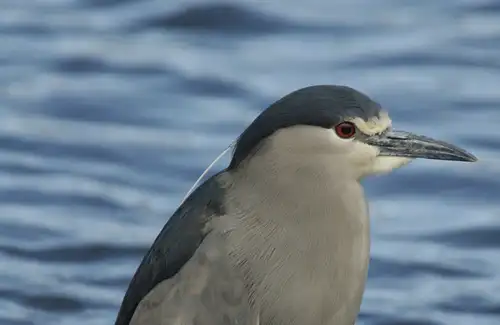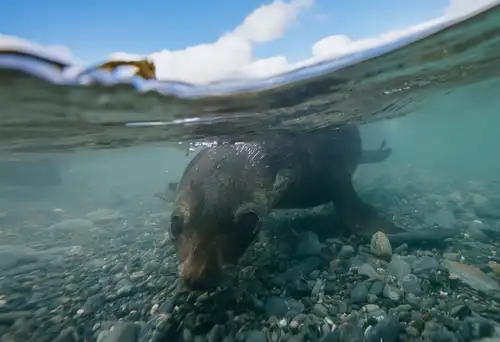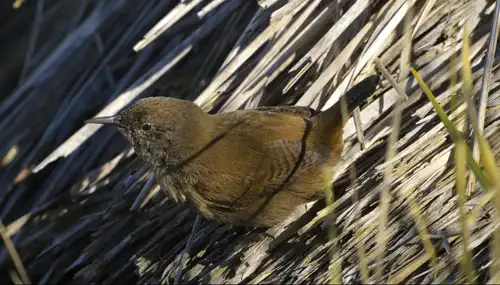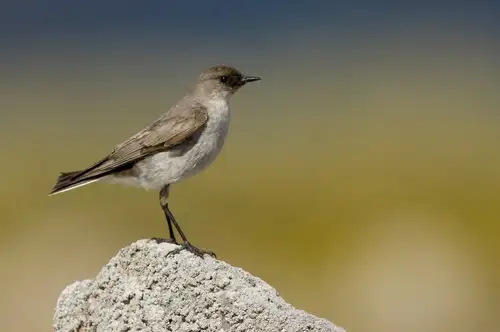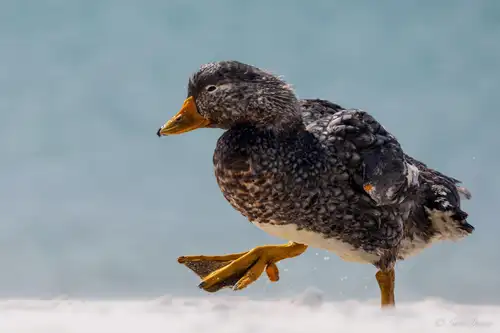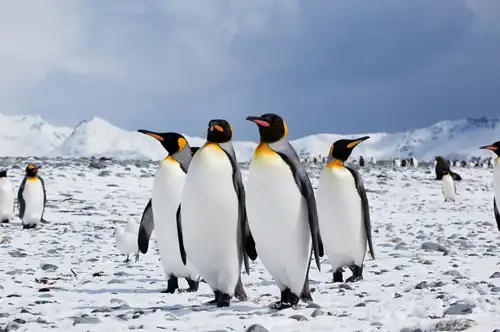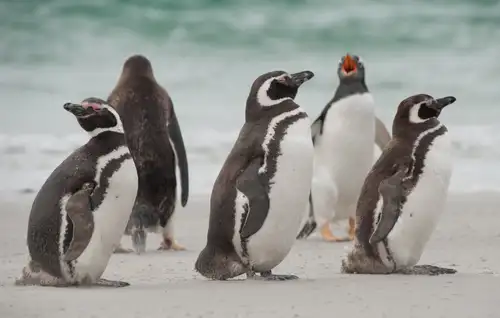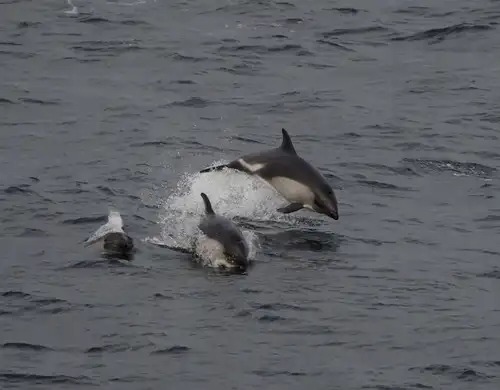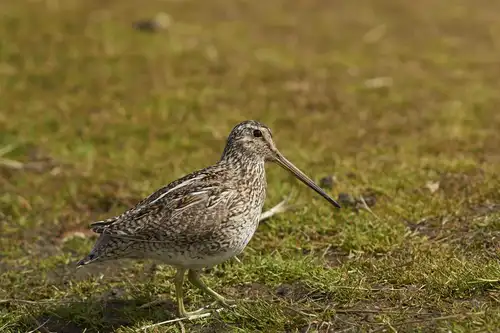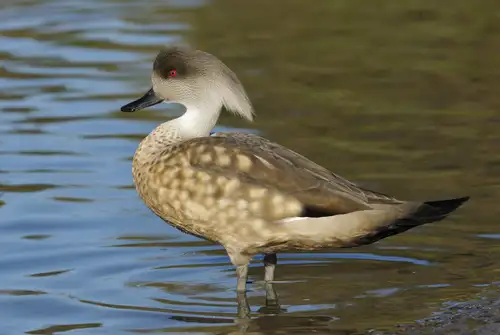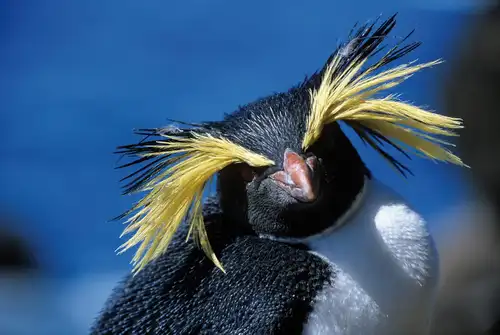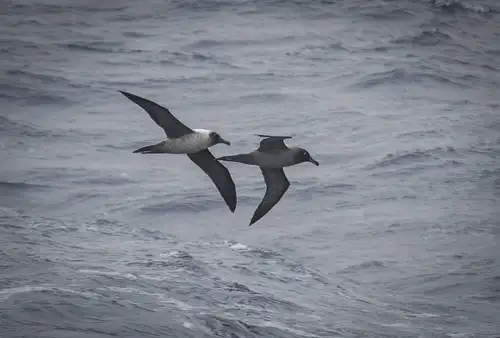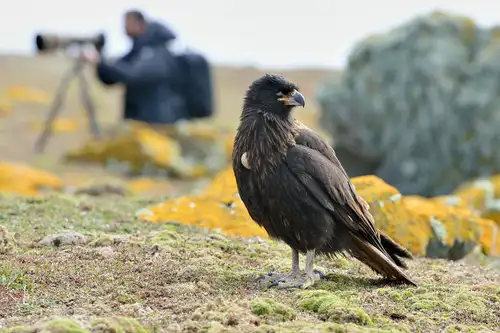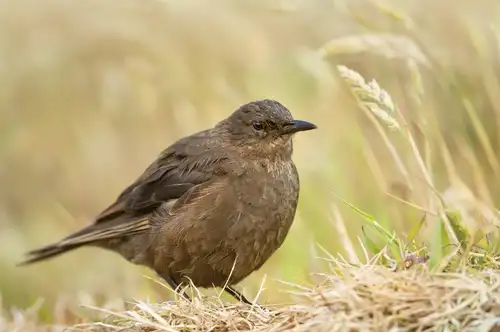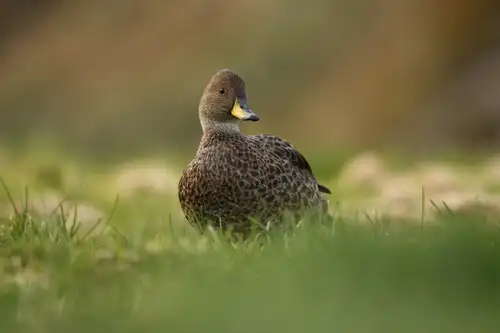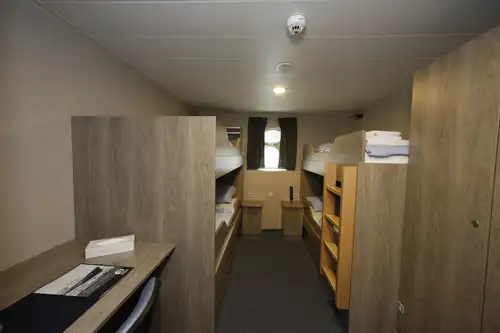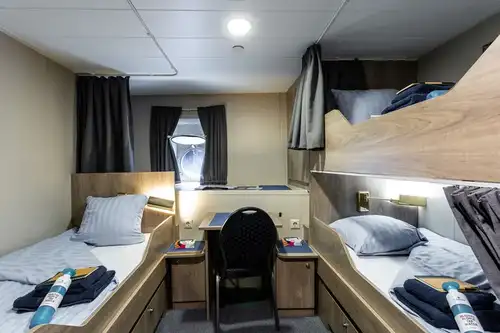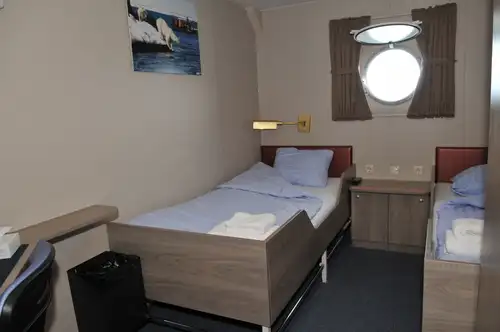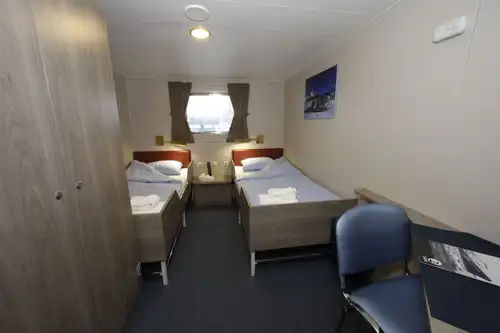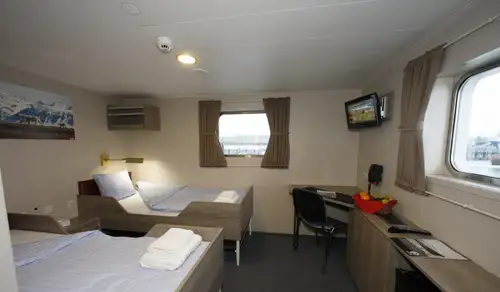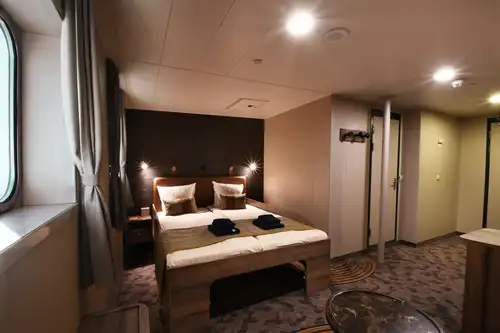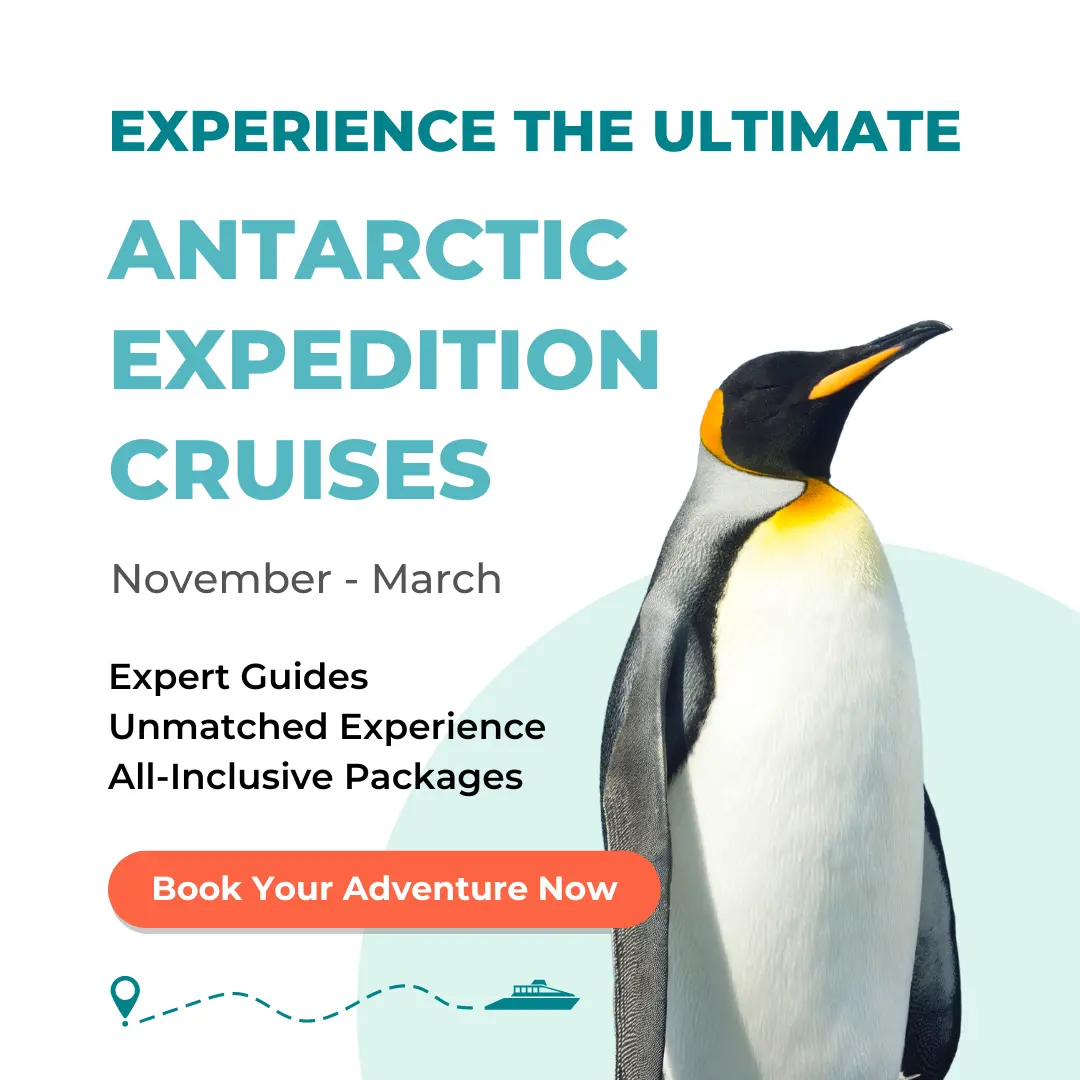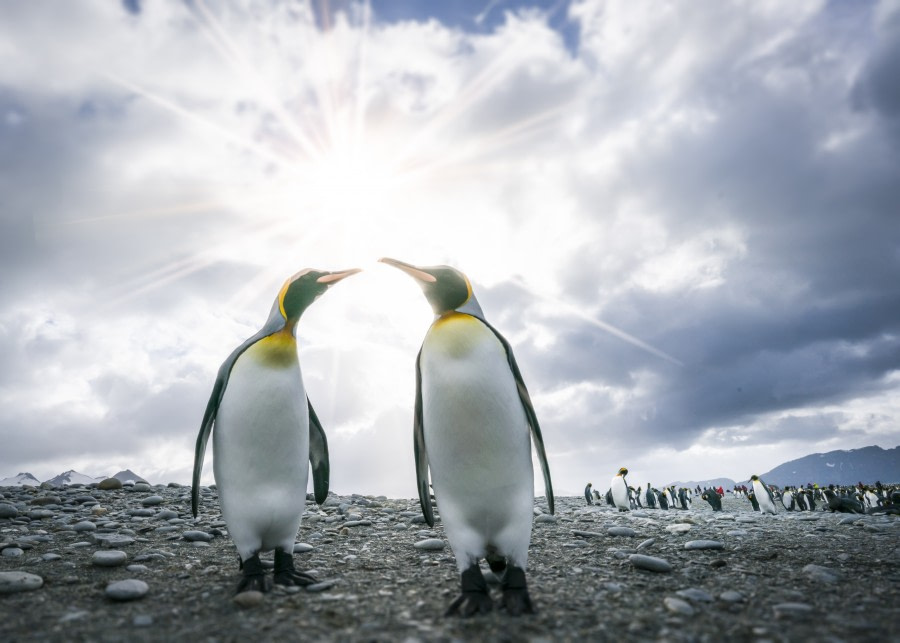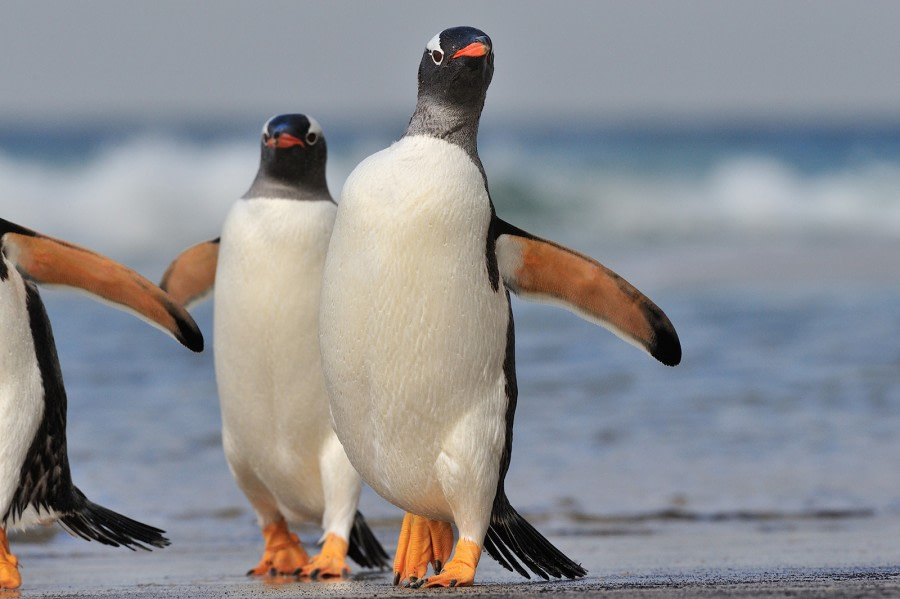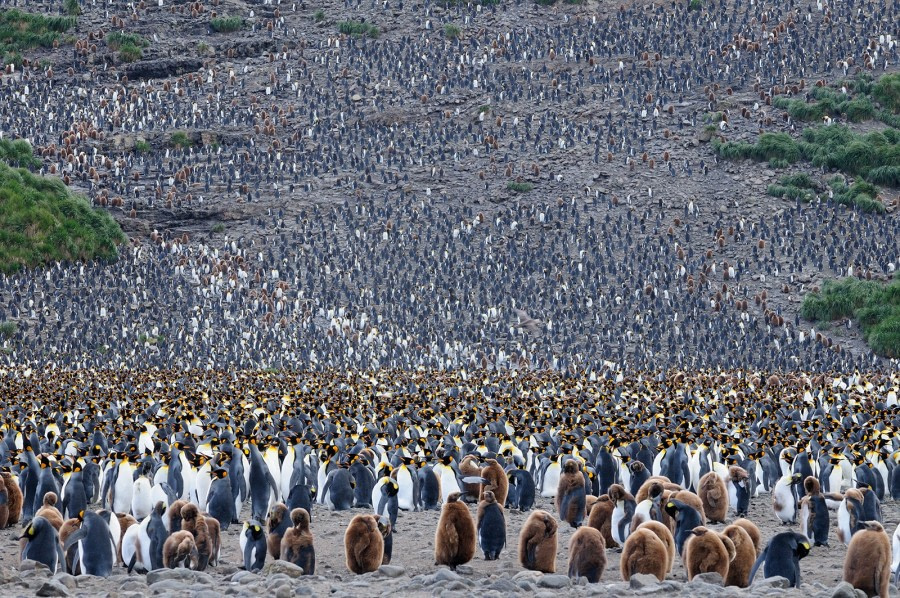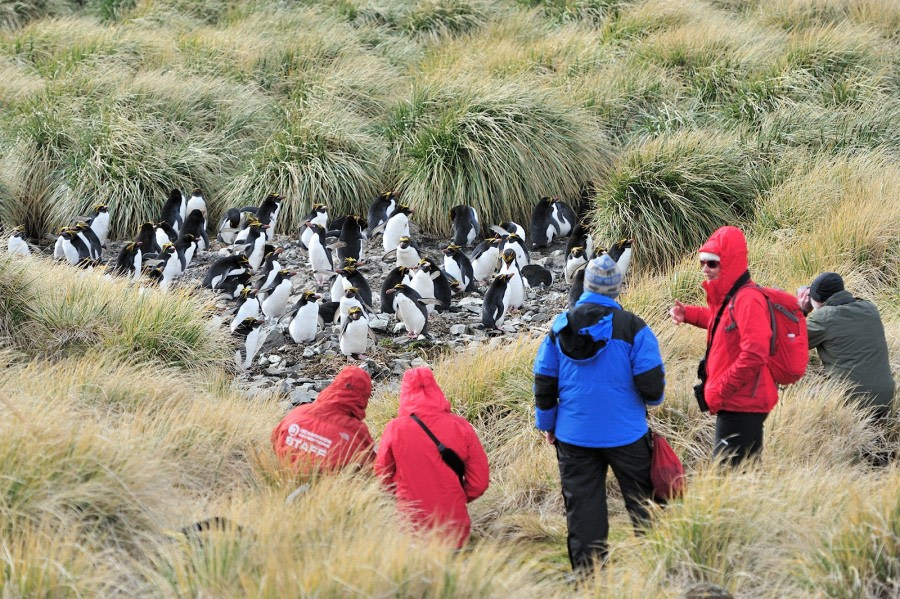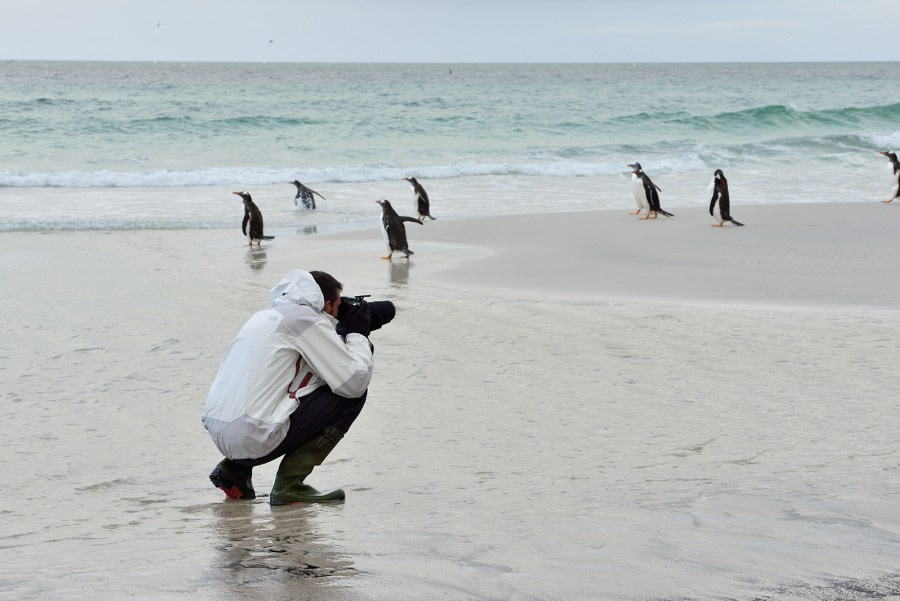 19 Days/18 Nights
19 Days/18 Nights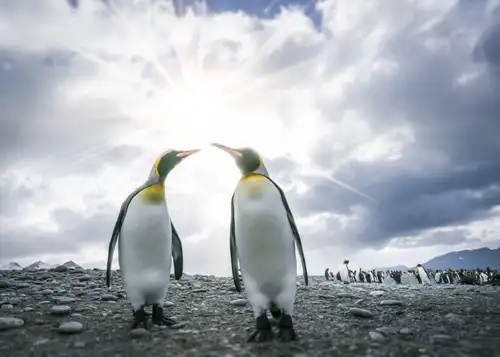
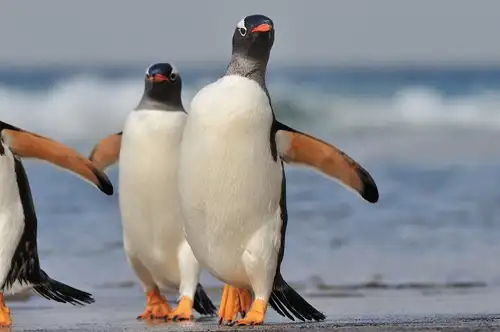
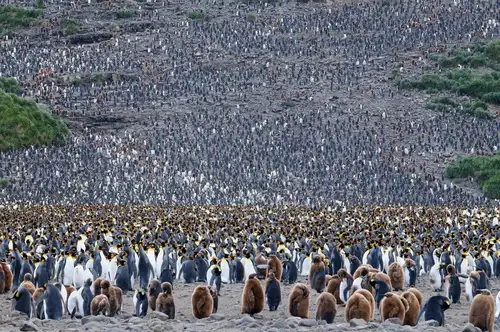
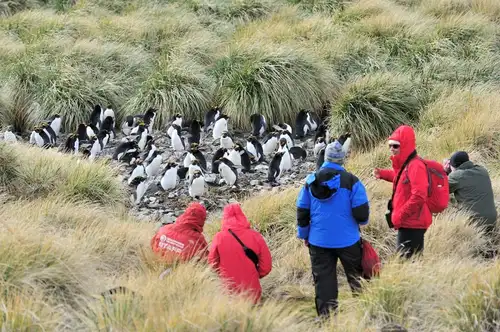
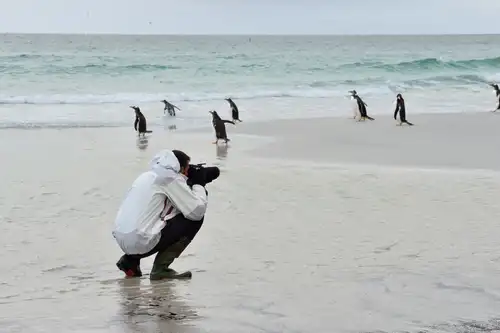
Note: All itineraries are for guidance only. Programs may vary depending on ice, weather, and wildlife conditions. Landings are subject to site availabilities, permissions, and environmental concerns per AECO regulations.
You start your expedition from Puerto Madryn in the afternoon, heading towards the Falkland Islands. Golfo Nuevo is known for its visiting southern right whales, so you might spot one as you sail towards the open ocean.
Sea life, sea birds
Though you’re now at sea, there’s rarely a lonely moment here. Several species of bird follow the vessel southeast, such as albatrosses, storm petrels, shearwaters, and diving petrels.
Finding the Falklands
The Falkland Islands offer an abundance of wildlife that is easily approachable, though caution is always advised. These islands are largely unknown gems, the site of a 1982 war between the UK and Argentina. Not only do various species of bird live here, but chances are great you’ll see both Peale’s dolphins and Commerson’s dolphins in the surrounding waters.
During this segment of the cruise, you may visit the following sites:
- Steeple Jason – Home to the world’s largest black-browed albatross colony (roughly 113,000), Steeple Jason is a wild and rarely visited island buffeted by wind and waves. Weather and swell conditions dictate the journey here.
- Carcass Island – Despite its name, this island is pleasantly rodent-free and hence bounteous with birdlife and many endemic species. Anything from breeding Magellanic penguins and gentoos to numerous waders and passerine birds (including Cobb’s wrens and tussock-birds) live here.
- Saunders Island – On Saunders Island you can see the black-browed albatross and its sometimes-clumsy landings, along with breeding imperial shags and rockhopper penguins. King penguins, Magellanic penguins, and gentoos are also found here.
The seat of Falklands culture
The capital of the Falklands and center of its culture, Port Stanley has some Victorian-era charm: colorful houses, well-tended gardens, and English-style pubs are all to be found here. You can also see several century-old clipper ships nearby, silent witnesses to the hardships of 19th century sailors. The small but interesting museum is also worth a visit, covering the early days of settlement up to the Falklands War. Approximately 2,100 people live in Port Stanley. Admission to the museum is included.
Once more to the sea
En route to South Georgia, you now cross the Antarctic Convergence. The temperature cools considerably within the space of a few hours, and nutritious water rises to the surface of the sea due to colliding water columns. This phenomenon attracts a multitude of seabirds near the ship, including several species of albatross, shearwaters, petrels, prions, and skuas.
South Georgia journey
Today you arrive at the first South Georgia activity site. Please keep in mind that weather conditions in this area can be challenging, largely dictating the program.
Sites you might visit include:
- Salisbury Plain, St. Andrews Bay, Gold Harbour – These sites not only house the three largest king penguin colonies in South Georgia, they’re also three of the world’s largest breeding beaches for southern elephant seals. Only during this time of year do they peak in their breeding cycle. Watch the four-ton bulls keep a constant vigil (and occasionally fight) over territories where dozens of females have just given birth or are about to deliver. You can also see a substantial number of Antarctic fur seals here during the breeding season (December – January).
- Fortuna Bay – A beautiful outwash plain from Fortuna Glacier is home to a large number of king penguins and seals. Here you may also have the chance to follow the final leg of Shackleton’s route to the abandoned whaling village of Stromness. This path cuts across the mountain pass beyond Shackleton’s Waterfall, and as the terrain is partly swampy, be prepared to cross a few small streams.
- Grytviken – In this abandoned whaling station, king penguins walk the streets and elephant seals lie around like they own the place – because they basically do. Here you might be able to see the South Georgia Museum as well as Shackleton’s grave.
In the afternoon of day 11 and depending on the conditions, we will start sailing southwards in the direction of the South Orkney Islands.
Southward bound
There may be sea ice on this route, and at the edge of the ice some south polar skuas and snow petrels could join the other seabirds trailing the vessel south.
The scenic vistas of South Orkney
Depending on the conditions, you might visit Orcadas Base, an Argentine scientific station on Laurie Island in the South Orkney archipelago. The personnel here will happily show you their facility, where you can enjoy expansive views of the surrounding glaciers. If a visit isn’t possible, you may instead land at Signy Island’s Shingle Cove.
Entering the Antarctic
Enormous icebergs and a fair chance of fin whale sightings ensure there’s never a dull moment on this last sea cruise south. Also, your best chance to spot Antarctic petrels is here. Depending on conditions, we aim to begin activities the afternoon of day 15.
Awe-inspiring Antarctica
If the ice conditions permit, you now sail into the Weddell Sea. Here colossal tabular icebergs herald your arrival to the eastern side of the Antarctic Peninsula. Paulet Island, with its large population of Adélie penguins, is a possible stop. You might also visit Brown Bluff, located in the ice-clogged Antarctic Sound, where you could get the chance to set foot on the Antarctic Continent itself.
If conditions aren’t favorable to enter the Weddell Sea from the east, the ship will set course for Elephant Island and head into the Bransfield Strait, between the South Shetland Islands and the Antarctic Peninsula.
The volcanic islands of the South Shetlands are windswept and often cloaked in mist, but they nonetheless offer many subtle pleasures. A wide variety of flora (mosses, lichens, flowering grasses) and fauna (gentoo penguins, chinstrap penguins, southern giant petrels) live here.
On Half Moon Island, Chinstrap penguins and Weddell seals often haul out onto the beach near Cámara Base, an Argentine scientific research station.
On Deception Island, the ship plunges through Neptune’s Bellows and into the flooded caldera. Here you can find an abandoned whaling station, and thousands of cape petrels. A number of kelp gulls, brown skuas, south polar skuas, and Antarctic terns can be spotted too. Wilson’s storm petrels and black-bellied storm petrels also nest in the ruins of the whaling station in Whalers Bay. As an alternative, you can take part in activities near Telefon Bay, further inside the caldera.
This extended cruise gives you the chance to sail even farther down the icy coast of the western Antarctic Peninsula. There are several opportunities for great landings where you might set foot on the Antarctic Continent, surrounded by an epic landscape of alpine peaks and mammoth glaciers calving at sea level. Gentoo penguins, leopard seals, Weddell seals, humpback whales, and minke whales are often seen here.
The breathtaking scenery continues in the Bransfield Straight and, if conditions allow further South in the Gerlache Strait. Conditions on the Drake Passage determine the exact time of departure.
Familiar seas, familiar friends
Your return cruise is far from lonely. While crossing the Drake, you’re again greeted by the vast array of seabirds remembered from the passage south. But they seem a little more familiar to you now, and you to them.
Earth’s southernmost city
You arrive and disembark in Ushuaia, commonly held to be the world’s most southern city. It is located on the Tierra del Fuego archipelago, nicknamed the “End of the World.” But despite this stopping point, the wealth of memories you’ve made on your Antarctic expedition will travel with you wherever your next adventure lies.









































































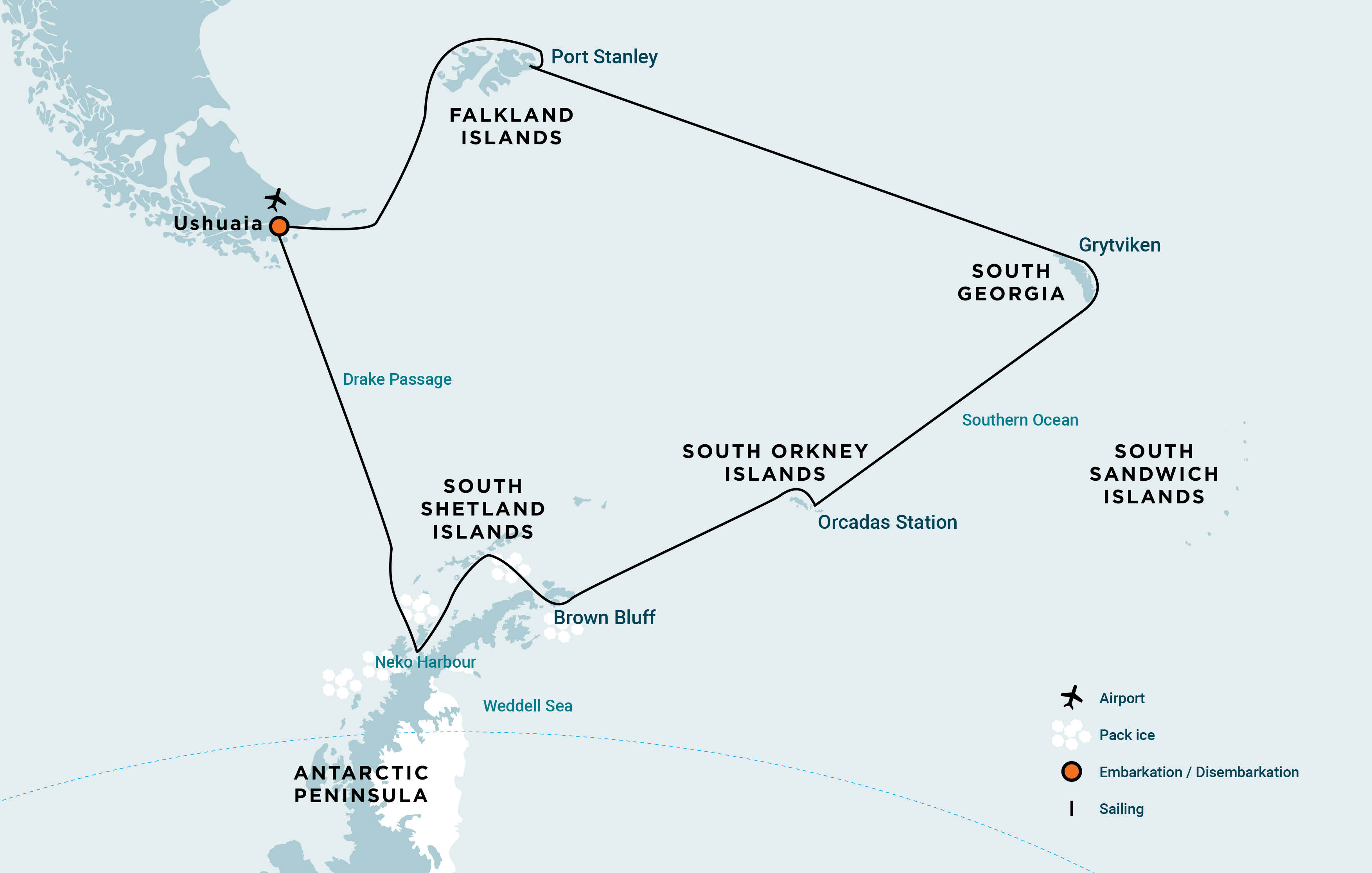
- Flights to the embarkation point and from the disembarkation point.
- Pre- and post- land arrangements.
- Passport and visa expenses.
- Meals ashore.
- Personal health Insurance for Medical, Accident and Repatriation/Evacuating.
- All personal expenses, including but not limited to laundry services, bar beverages, and excess internet usage charges.
- The customary gratuity at the end of the voyages for stewards and other service personnel aboard (guidelines will be provided).
- Voyage aboard the indicated vessel
- All meals throughout the voyage aboard the ship including snacks, coffee and tea.
- All shore excursions and activities throughout the voyage by Zodiac.
- Program of lectures by noted naturalists and leadership by experienced expedition staff.
- Free use of rubber boots and snowshoes.
- Pre-scheduled group transfer from the vessel to the airport in Ushuaia (directly after disembarkation).
- All miscellaneous service taxes and port charges throughout the programme.
- Comprehensive pre-departure material.
- You need to be in good general health and able to walk several hours per day. Though our expeditions are ship-based, they can be physically demanding. You can choose to stay on the vessel if you prefer, but you will still need to be able to move safely around the ship even in bad weather. Assuming you choose to join landings, you will need to be able to get in and out of the Zodiacs. You must also be capable of getting up and down the gangway. This will become easier with practice, but the gangway is steep and moves with the rocking of the vessel. Conditions on shore can also be rocky, uneven, and slippery, and we will be in remote areas without access to sophisticated medical facilities. You must not join an expedition if you have a life-threatening condition or need daily medical treatment. Any major health problem or physical condition that requires emergency care must be brought to our attention prior to the voyage. Please fill out our Personal Information Form, which we will send at the time of booking. This form must be completed and returned within one month of your book date. Since we travel in such remote areas, medical evacuation by air is often impossible. We therefore reserve the right to refuse travel or participation in activities to anyone whose health concerns might pose a safety risk to our staff or other passengers.
- Expeditions cruises are trips that focus on maximum contact with local wildlife, natural phenomena, and locations of cultural/scientific significance. These trips are best enjoyed in relatively small groups led by highly experienced expedition guides.
- No, you are not able to get cash advances on the vessel.
- Aboard Hondius, Ortelius, Plancius, and Rembrandt van Rijn, refreshments and souvenirs will be charged to your cabin. The day before disembarking, you can settle your bill with the hotel manager and pay by Visa or MasterCard, Diners Club/Discover, Union Pay, or cash (Euro or USD). The prices and standard currency on board all of our vessels is the Euro.
- The climate in the Antarctic Peninsula is much milder than most people would imagine because it is located near the most northerly part of Antarctica. If you travel to the Antarctic Peninsula during January, which is summertime, you can expect an average temperature of 1 to 2 degrees Celsius (33.8 to 35.6 degrees Fahrenheit). June is the coldest part of the year, and the temperature range is typically -20 to -15 degrees Celsius (-4 to 5 degrees Fahrenheit) during this part of the winter. Precipitation amounts vary throughout the region. On your voyage to the Antarctic Peninsula you can expect at least some rain on occasion. On the other hand, the interior of Antarctica is similar to a desert in that it only receives an annual precipitation amount of 10 cm (3.93 inches).
- The Antarctic Peninsula follows Coordinated Universal Time -3 (UTC -3). This means that if it is 18:00 UTC-3 (6 p.m.) during your expedition cruise trip to the Antarctic Peninsula , it would be 17:00 (5 p.m.) in New York City, USA and 22:00 (10 p.m.) in London, U.K.
- The ship Plancius was built in 1976 as an oceanographic research vessel for the Royal Dutch Navy.
- There are in total 50 cabins at the Plancius: 4 quadruple cabins with private toilet and shower 9 twin porthole cabins 25 twin cabins with window 2 twin deluxe cabins (ca 15 square meters) 10 superior cabins (ca 21 square meters)
You May Also Like


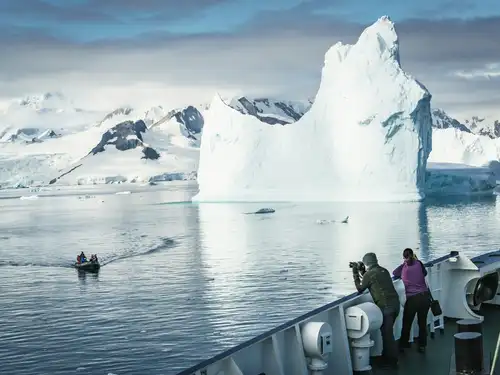
Falklands, South Georgia and Antarctica - Photographic Special
 21 Days / 20 Nights
21 Days / 20 Nights
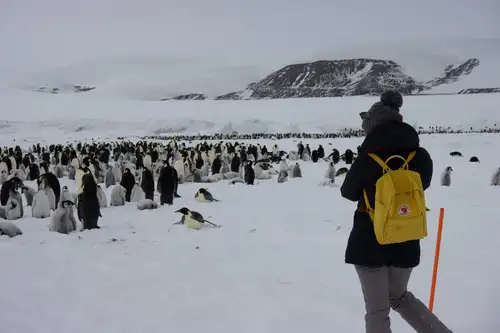
Weddell Sea – In search of the Emperor Penguin, incl. helicopters
 11 Days / 10 Nights
11 Days / 10 Nights

South Georgia Explorer
 15 Days / 14 Nights
15 Days / 14 Nights

Antarctica - Discovery and learning voyage
 11 Days / 10 Nights
11 Days / 10 Nights

Falkland Islands - South Georgia - Antarctica
 20 Days / 19 Nights
20 Days / 19 Nights

Antarctica - Basecamp - free camping, kayaking, snowshoe/hiking, mountaineering, photo workshop
 13 Days / 12 Nights
13 Days / 12 Nights

Remote Weddell Sea Explorer incl. South Georgia - South Sandwich Islands - Neuschwabenland - Larsen Ice Shelf - Paulet and Devil Island - Elephant Island, incl. helicopters
 28 Days / 27 Nights
28 Days / 27 Nights

Falkland Islands - South Georgia - Elephant Island - Antarctica - Polar Circle
 23 Days / 22 Nights
23 Days / 22 Nights
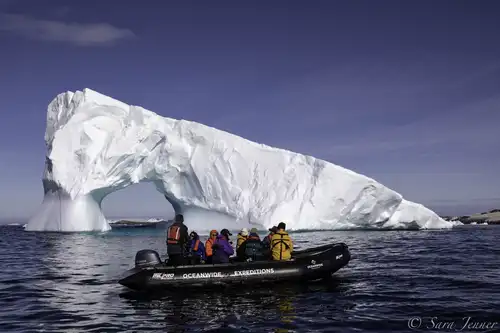
Antarctica - Elephant Island - Weddell Sea - Polar Circle - Aurora Australis / Southern Lights
 15 Days / 14 Nights
15 Days / 14 Nights

Antarctica - Whale watching discovery and learning voyage - Aurora Australis / Southern Lights
 11 Days / 10 Nights
11 Days / 10 Nights

Antarctica - Beyond the Polar Circle - whale watching - Aurora Australis / Southern Lights
 12 Days / 11 Nights
12 Days / 11 Nights
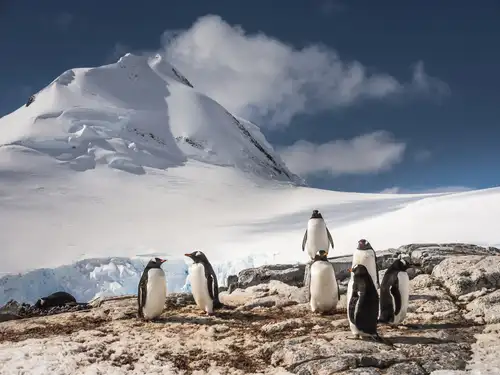
Antarctica - Whale watching
 10 Days / 9 Nights
10 Days / 9 Nights

Atlantic Odyssey incl. Antarctic Peninsula to St. Helena
 33 Days / 32 Nights
33 Days / 32 Nights
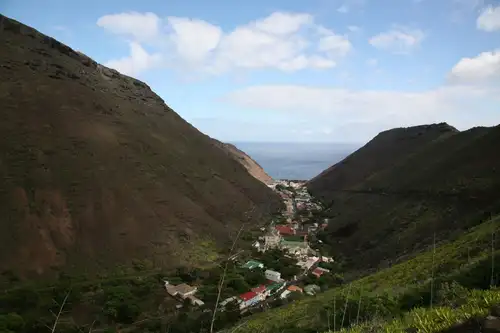
Atlantic Odyssey incl. Antarctic Peninsula to Cape Verde
 43 Days / 42 Nights
43 Days / 42 Nights

Atlantic Odyssey, excl. Antarctic Peninsula
 24 Days / 23 Nights
24 Days / 23 Nights
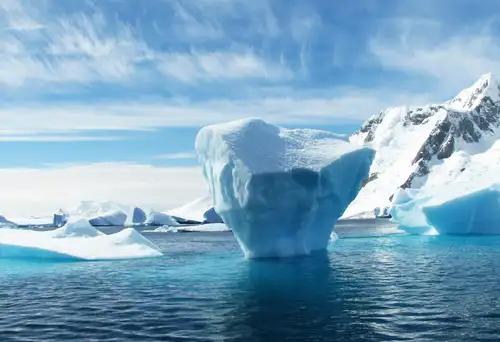
Atlantic Odyssey excl. Antarctic Peninsula to Cape Verde
 34 Days / 33 Nights
34 Days / 33 Nights

Falkland Islands - South Georgia - Antarctic Peninsula - Photography special
 21 Days / 20 Nights
21 Days / 20 Nights

Falkland Islands - South Georgia - Antarctic Peninsula
 21 Days / 20 Nights
21 Days / 20 Nights

Falkland Islands - South Georgia - Antarctic Peninsula - Birding
 19 Days / 18 Nights
19 Days / 18 Nights

Antarctica - Discovery and learning + Long hikes
 11 Days / 10 Nights
11 Days / 10 Nights

Bellingshausen Sea / Peter I Island + Ellsworth Land - incl. helicopters
 25 Days / 24 Nights
25 Days / 24 Nights

Antarctic Peninsula - Weddell Sea + Activity: Long Hikes
 11 Days / 10 Nights
11 Days / 10 Nights

Remote Weddell Sea Explorer - incl. helicopters
 28 Days / 27 Nights
28 Days / 27 Nights
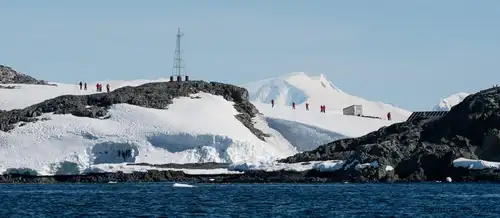
Antarctica - Polar Circle - Deep South Discovery voyage - Aurora Australis / Southern Lights
 13 Days / 12 Nights
13 Days / 12 Nights
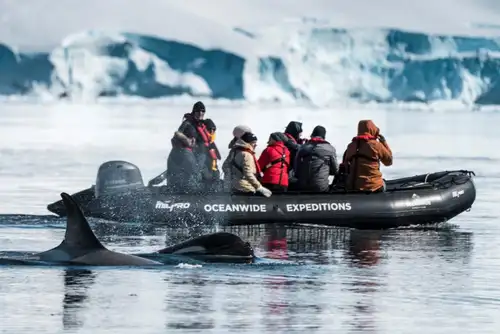
Antarctica - Whale watching discovery and learning voyage
 11 Days / 10 Nights
11 Days / 10 Nights

Antarctica - Elephant Island - Weddell Sea - Polar Circle
 15 Days / 14 Nights
15 Days / 14 Nights
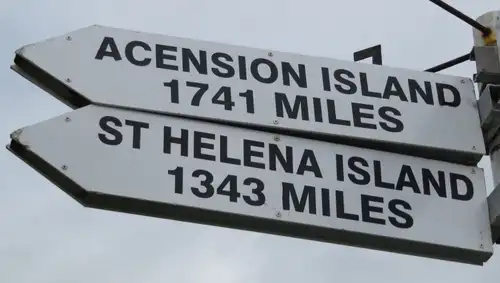
What to pack for your Atlantic Odyssey voyage?
